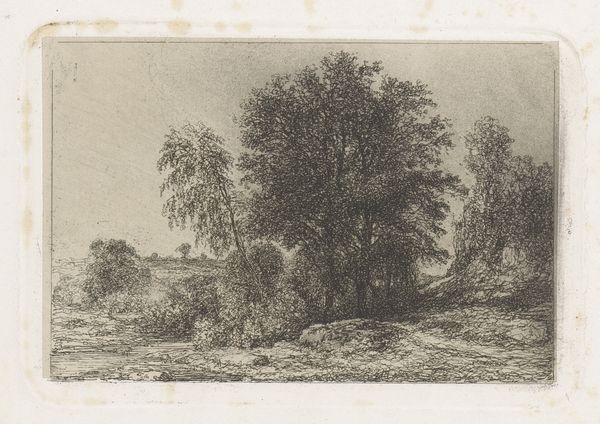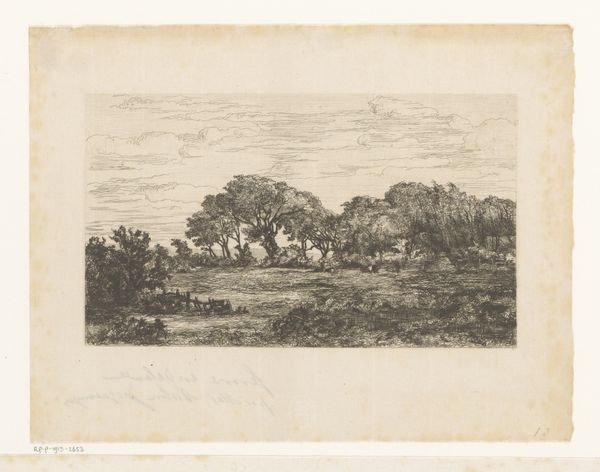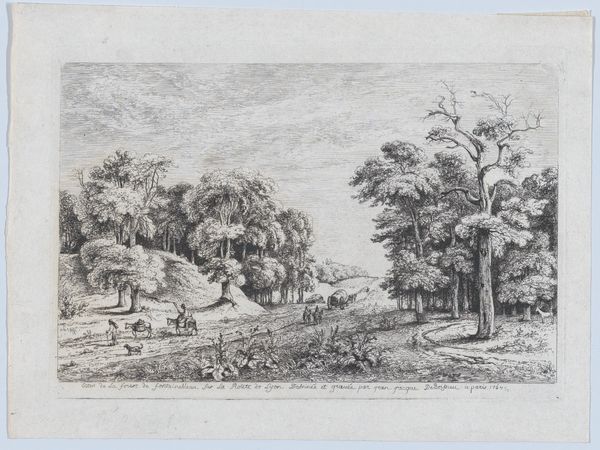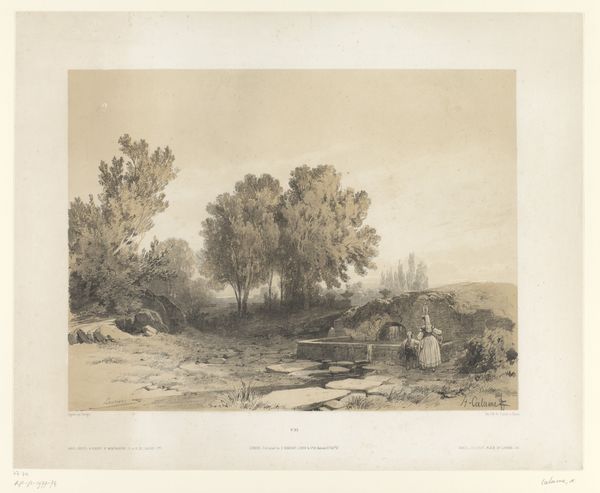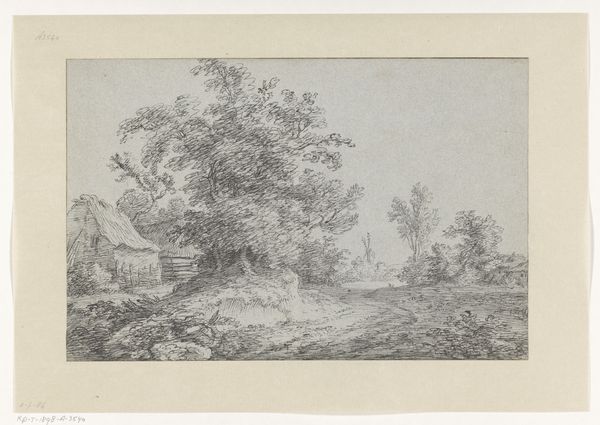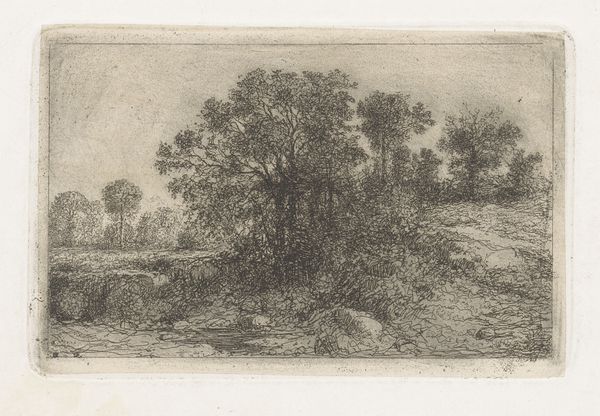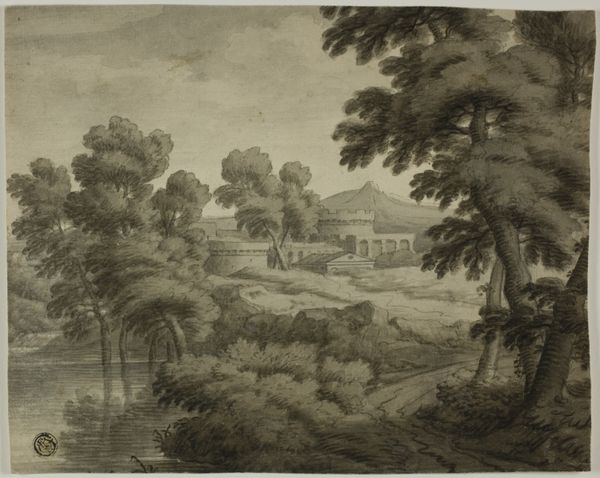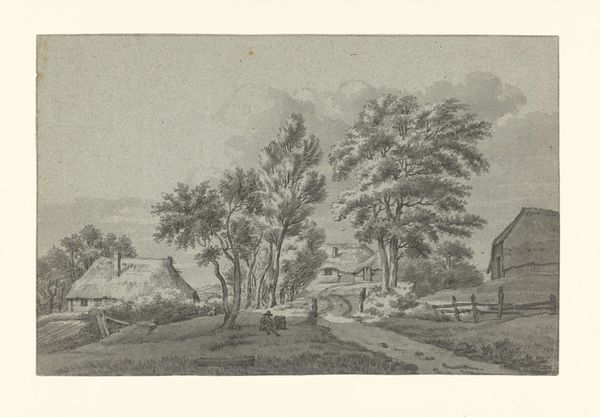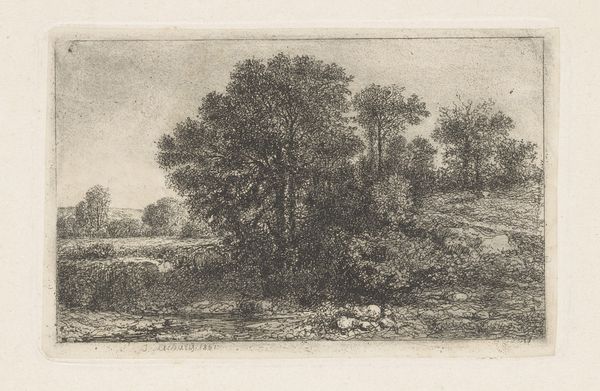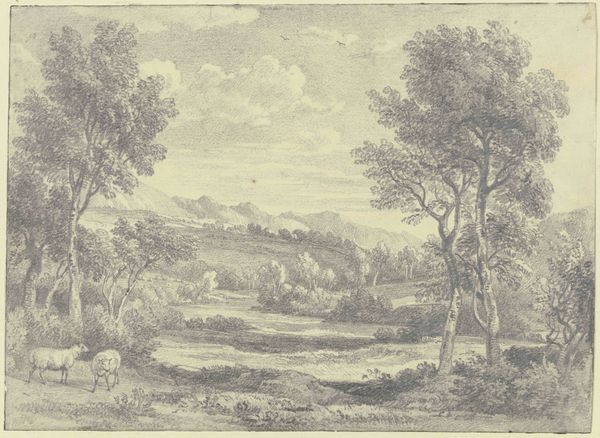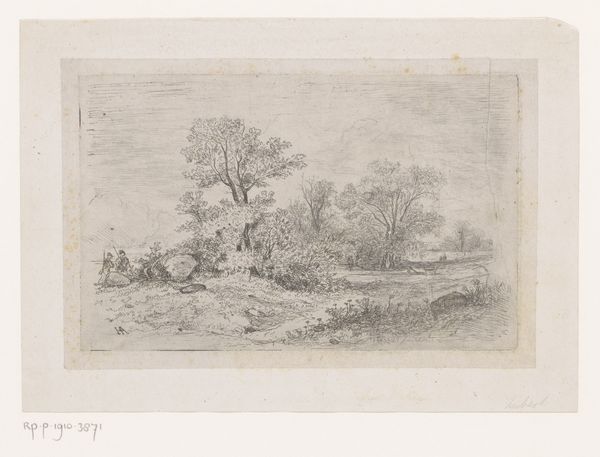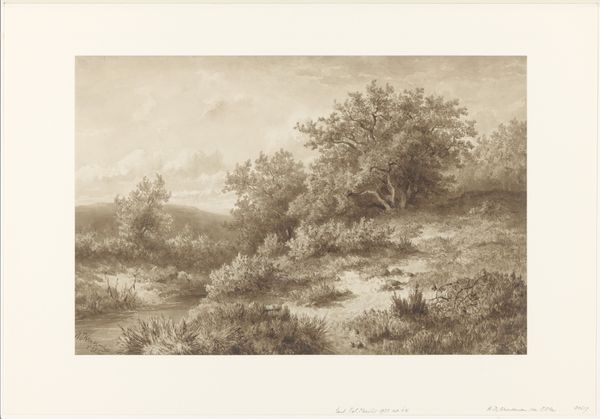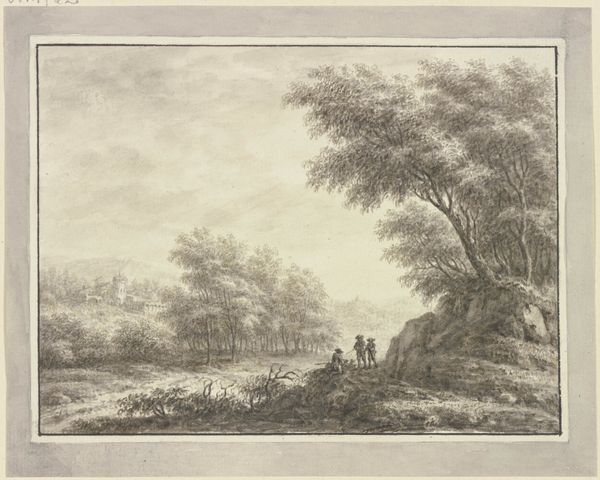
drawing, ink, pencil
#
drawing
#
landscape
#
ink
#
romanticism
#
pencil
Dimensions: height 263 mm, width 370 mm
Copyright: Rijks Museum: Open Domain
Albertus Brondgeest rendered this sepia drawing of a bleaching field, a ‘bleekveld’, sometime before 1849. These meadows, common in the Netherlands, were used to whiten fabrics through exposure to sunlight. Notice how the scene is carefully constructed, with the open field on the left and the wooded area on the right, leading the eye towards the distant buildings. This composition echoes classical landscape paintings, where open and enclosed spaces symbolized the interplay between civilization and nature. Think of the ‘locus amoenus’, a pleasant, shaded place, often juxtaposed with a wide, open vista in classical Roman art. But here, the bleaching field introduces a specific cultural element. The act of whitening textiles can be seen as a metaphor for purification, not unlike the ritual cleansing found in many cultures and religions. This seemingly simple landscape then becomes a stage for deeper, more subconscious reflections on transformation, purity, and our relationship with the natural world. A cycle of symbols, constantly reforming through human and historical experience.
Comments
No comments
Be the first to comment and join the conversation on the ultimate creative platform.
